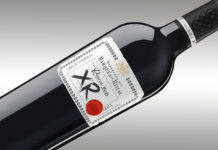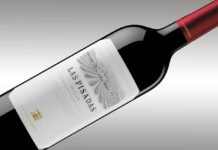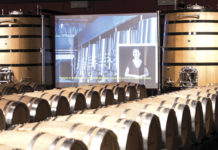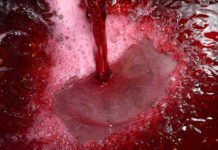Researchers from the Technology and Analytic Process Control Group at the University of La Rioja will be conducting a research project over the next three years that aims to guarantee the quality of the premium wines produced by Bodegas Riojanas —the venerable company from Cenicero, known for its emblematic brands, Monte Real and Viña Albina— to obtain a ‘sensory fingerprint’ and prevent any cork taint or Brett character affecting its wines.
The professors of Analytic Chemistry, Consuelo Pizarro and José María González, will be heading up this research project entitled ‘New control techniques to obtain aged wines without allergens. Development of a system for detecting haloanisoles and volatile phenols at the winery, based on Ion Mobility Spectrometry detection.’ Bodegas Riojanas will be funding the research to the tune of €90,750 and purchasing two IMS (Ion Mobility Spectrometry) machines to enable the researchers’ work on the project’s three objectives: to guarantee the quality standards of its wines by obtaining their ‘sensory fingerprint’ and to prevent wines being affected cork taint and Brett character. Once the analysis methods have been validated, they will be transferred to Bodegas Riojanas where the winery’s laboratory staff will be trained in their use.
Sensory fingerprint
In the case of the ‘sensory fingerprint’, the aim is to classify the components that define and characterize Bodegas Riojanas’ premium wines. In principle, some 19 compounds that are present in premium wines will be analysed to identify in what quantities they are found in samples of the first wine provided by Bodegas Riojanas. This list of 19 compounds may eventually vary, although the goal is to determine the profile or ‘sensory fingerprint’; in other words, to understand which compounds are found in Bodegas Riojanas’ premium wines and in what quantities so that the winery can make key decisions at an early stage in the production process based on objective data and not just on subjective tasting.
Cork taint and Brett character
The Ion Mobility Spectrometry machine (IMS) will also help to identify the presence of volatile phenols and haloanisoles —which are responsible for cork taint and Brett character in wines— by analysing cork samples, the water from washing out the barrels, the barrels themselves and fermented wines. The IMS will allow these compounds to be identified quickly and simply and, in the case of the corks and the washing water of the barrels, will help to prevent these weak points from affecting the organoleptic properties of the wine; and in the case of the barrels and the fermented wine, it will help oenologists to make key decisions to control and prevent these defects in time.
BODEGAS RIOJANAS S.A.
It is impossible to talk about the history of D.O.Ca. Rioja without mentioning Bodegas Riojanas and the Artacho–Frías family, a pioneer in Riojan grape-growing and winemaking practices. The family has been making wine from its own vineyards since the 1700s. The current winery was built in 1890 and is simply referred to by the local people of Cenicero and the surrounding area as “the winery”, as for many decades it was the only one in the area. Local vineyard-owners used to sell their grapes to the winery and several generations have been involved in both fieldwork and winemaking processes. In 1890 the company adopted the name ‘BODEGAS RIOJANAS’ and today it is the only winery in the Designation of Origin that is allowed to use this name by law.
The tremendous passion that the family has always felt for grape-growing and winemaking has been passed down to the current team at Bodegas Riojanas, which views its most precious legacy as this commitment to the quality and distinctive personality of its wines, which include such emblematic brands as Monte Real and Viña Albina, while at the same time managing to embrace both innovation and international expansion.
Bodegas Riojanas signed an agreement with the University of de La Rioja in 2005 to establish institutional relations that would lead to joint scientific, technical and academic projects. Amongst other activities, this same research group was responsible for the project entitled ‘Development of calibrations to control fermentation and monitor the wine ageing process.’












